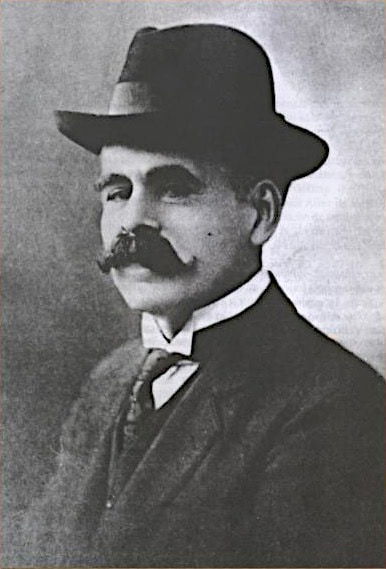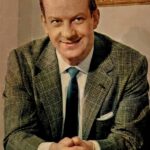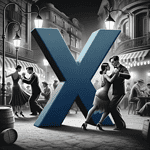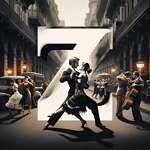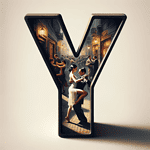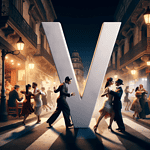One of the earliest unforgotten trailblazers of Tango music was Ángel Villoldo. A multifaceted musician, Villoldo played a pivotal role in shaping the early days of tango, most of all with his composition “El choclo”, together with “La cumparsita” one of the songs without which Tango might never had the long-lasting success we have come to enjoy.
Table of Contents
Ángel Villoldo: A Musical Journey
Ángel Villoldo, also known by pseudonyms such as A. Gregorio and Fray Pimiento, was not only a composer but also a lyricist, guitarist, and a prominent singer of his time. Born in 1861, in Barracas of Southern Buenos Aires, he was an early pioneer that helped shape Tango as we know it today.
Apart from being a prolific composer, Villoldo was an inventive musician. He devised a unique apparatus that allowed him to play the harmonica and guitar simultaneously, captivating audiences with his dual musical prowess. His repertoire contributed to the development of tango, and milongas, and also included valses, polcas, and a diverse range of folkloric pieces.
The Choclo: Tango’s Enduring Jewel
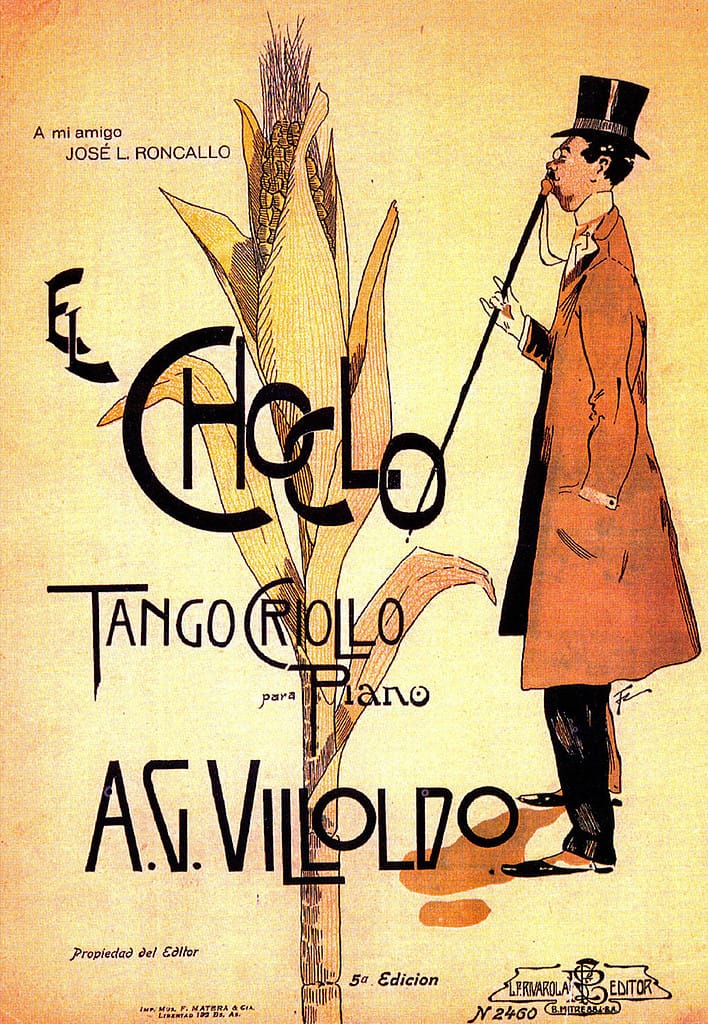
El Choclo – the creole dance to change everything
Villoldo’s famous masterpieces, “El Choclo,” emerged in 1903 during a time when performing tangos in elegant venues was prohibited. Collaborating with José Luis Roncallo, director of a classical music orchestra, Villoldo cleverly presented “El Choclo” as a dance criolla, sidestepping the ban.
The tango gained immense popularity, even reaching international acclaim. Villoldo’s journey to Paris in 1903, sponsored by “Gath y Chaves,” further solidified the global recognition of “El Choclo.”
There are hundreds of versions of “El choclo”, which after “La cumparista” is maybe the most famous classic Tango. There are many instrumental versions, but also three different lyrics versions.
The following recording is our favorite; a very tasteful and balanced recording, perfect for a night at the Milonga. Like an “estribillista” of the 1930s, the singer Angel Várgas only sets in at Minute 1.30, and softly recites a few lines of the lyrics, before stepping off the stage again for the Orchestra´s final “Chan-Chan”.
And if you think you may have heard the song before, but are not exactly sure when and where and sung by whom, well maybe this version rings a bell:
Tangos by Villoldo: Diverse and Timeless Compositions
Villoldo’s musical legacy encompasses a wide array of tangos, and milongas that are still present in today´s milongas, such as “El esquinazo,” “El Porteñito”, “La morocha,” and of course the iconic “El Choclo.”
Top 10 Most Important Tango Songs by Ángel Villoldo
- “El Choclo”
- Recording Year: 1903
- Orchestra: Ángel Villoldo
- Details: A timeless classic, “El Choclo” is celebrated for its spirited rhythm and melodic charm. Its popularity endures in milonga dance events worldwide, with orchestras and ensembles from diverse genres paying homage to this iconic tango.
- “A la ciudad de Londres”
- Orchestra: Ángel Villoldo
- Details: This tango reflects Villoldo’s ability to infuse diverse influences into his compositions. “A la ciudad de Londres” showcases a fusion of traditional tango elements with a touch of international flair.
- “Bolada de aficionado”
- Details: With its energetic pace and intricate musical arrangements, “Bolada de aficionado” is a testament to Villoldo’s mastery in crafting tango pieces that captivate both dancers and listeners.
- “Amame Mucho”
- Details: “Amame Mucho” stands out for its romantic allure, showcasing Villoldo’s versatility in evoking a range of emotions through his compositions.
- “Brisas rosarinas”
- Details: This tango-milonga exudes the lively spirit of Villoldo’s compositions, with playful melodies and intricate rhythms that make it a favorite among dancers.
- “Calandria”
- Details: “Calandria” showcases Villoldo’s ability to weave storytelling into his music, with each note narrating a vibrant tale that unfolds on the dance floor.
- “Chiflale que va a venir”
- Details: Known for its catchy melodies and rhythmic twists, “Chiflale que va a venir” exemplifies Villoldo’s knack for creating tunes that linger in the hearts of tango enthusiasts.
- “Chinito”
- Details: With its distinctive charm and playful undertones, “Chinito” adds a touch of joy to the tango repertoire, embodying the diverse influences in Villoldo’s musical expression.
- “Cuerpo de alambre”
- Details: “Cuerpo de alambre” showcases Villoldo’s experimentation with musical elements, featuring a captivating interplay of instruments that makes it a standout piece.
- “De farra en el cabaret”
- Details: This tango reflects the lively and festive atmosphere of cabarets, with Villoldo’s musical genius shining through in every note, creating an irresistible urge to dance.
Frequently Asked Questions about Ángel Villoldo
Which of Ángel Villoldo’s compositions gained international acclaim?
One of Villoldo’s most famous compositions is “El Choclo,” created in 1903. This tango became a sensation not only in Buenos Aires but also internationally. Its clever presentation as a dance criolla allowed it to be performed in venues where tangos were initially prohibited.
How did Ángel Villoldo navigate the prohibition of tangos in certain venues?
Villoldo, along with José Luis Roncallo, director of a classical music orchestra, cleverly presented “El Choclo” as a dance criolla to bypass the prohibition of tangos in elegant venues. This innovative approach allowed the tango to be performed and appreciated despite the restrictions.
What was Ángel Villoldo’s influence on later generations of tango musicians?
Ángel Villoldo’s original and lively compositions, characterized by his affable persona and distinctive appearance, left an indelible mark on the iconography of tango’s founding figures. His innovative spirit and musical legacy continue to inspire tango musicians and enthusiasts to this day.
Notable Sources
- Orlando del Greco. “Ángel Villoldo.” Accessed on January 28, 2019.
- Néstor Pinsón. “Ángel Villoldo.” Accessed on January 28, 2019.
- Antonio M. Carrasco. “La prohibición del piropo no es nueva y las bromas que provoca tampoco.” El Debate (periódico digital). November 20, 2022.
